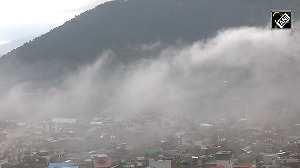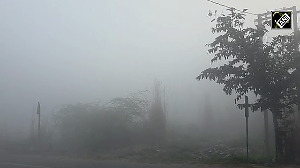The Reserve Bank of India on Friday increased the cash reserve ratio by 0.50 percentage points in two stages.
The hike, which comes after over two years, will suck out a total of Rs 13,500 crore (Rs 135 billiion) from the banking system. The cash reserve ratio - at 5 per cent now - will be hiked by 0.25 percentage points from December 23 and by a similar margin from January 6.
The move, which means banks must keep cash equivalent to 5.5 per cent of their deposits, is aimed at preventing excess liquidity from fuelling overheating of the economy, reining in inflationary expectations and halting the continuing unbridled credit growth.
Bankers expect a 50 basis point increase in retail as well as corporate lending rates following further tightening of the monetary policy by the RBI. One basis point is one hundredth of a percentage point.
The rise in interest rates would be more focused on borrowers receiving credit at rates lower than banks' prime lending rates, a State Bank of India executive said. Banks would now be forced to rework their credit lending strategies, especially sub-PLR lending, said Rupa Nitsure-Rege, chief economist at Bank of Baroda.
State Bank of India's decision to raise deposit rates by 25-75 basis points from December 11 will act as another factor for other banks to follow and pass on the rise in cost of funds to borrowers to protect their margins.
The RBI cited a slew of developments in the domestic economy for its sudden move to further tighten the monetary policy, after three hikes of 0.25 percentage points each in the reverse repo rate in 2006 and an identical increase in the repo rate in its October 2006 credit policy review.
Repo rate is that at which the central bank injects liquidity into the banking system while reverse repo rate is that at which the RBI sucks out liquidity from the system.
The concerns listed included the unexpectedly high 9.1 per cent growth in the gross domestic product in the first half of 2006-07, the 30.1 per cent increase in non-food credit up to November 24, 2006, the 19.4 per cent rise in money supply and increase in balances in the market stabilisation scheme.
The RBI pointed out that consumer price indices were higher by around 3 percentage points compared to a year earlier.
"Foreign capital inflows are expected to remain at higher levels. Such inflows have implications for inflation. The main purpose of the cash reserve ratio hike is to moderate inflation expectation. Containing growth in credit is secondary objective," RBI sources said.
Monetary expansion and the liquidity situation post risks to already-high inflation, and the elevated levels of equity and property prices are seen as hazards for macroeconomic and financial stability.
"Inflation has stabilised over 5 per cent, which is a worrisome matter," said Nitsure-Rege.
Inflation, based on the wholesale price index, in the week ended November 24 was 5.30 per cent, down from 5.45 per cent a week earlier.
Foreign capital flows have been very strong in recent weeks, resulting in accretion of $8 billion to foreign exchange reserves in November 2006, which is seen as leading to increased liquidity.







 © 2025
© 2025